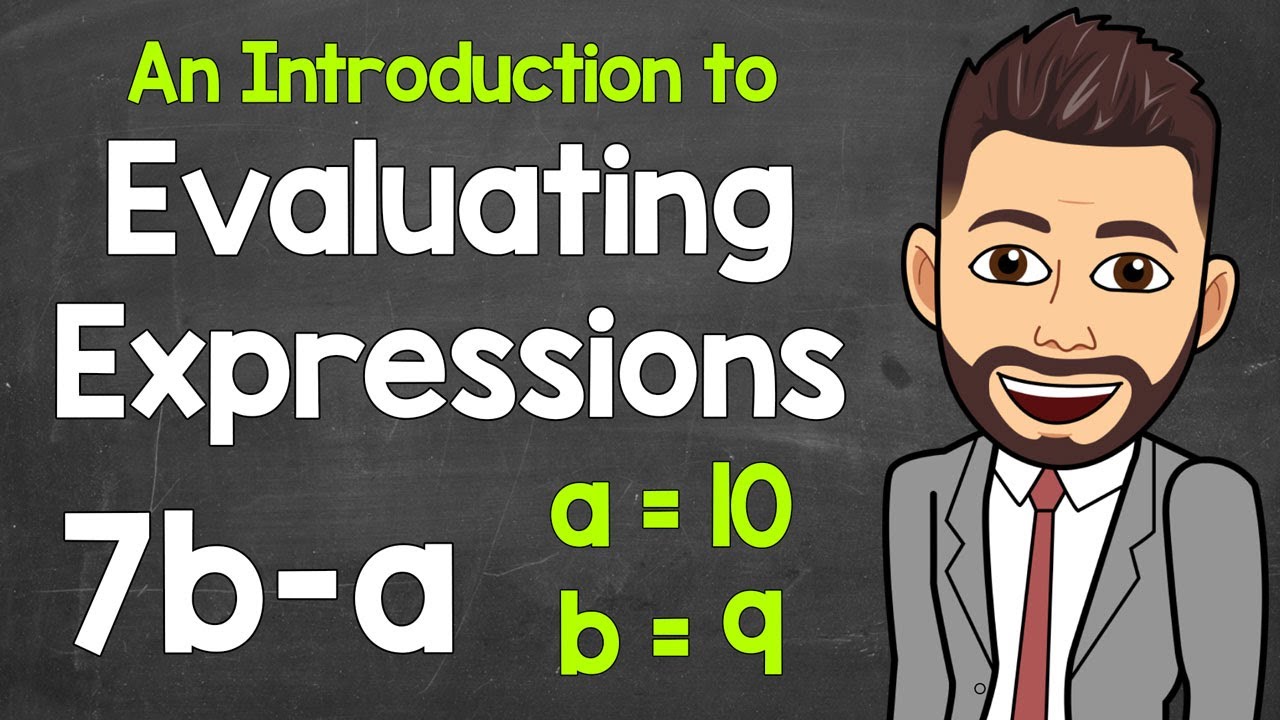
What Does "Evaluate the Expression" Mean in Math? A Comprehensive Guide

- Understanding the Concept of Evaluating Expressions in Mathematics
- Step-by-Step Guide: How to Evaluate a Mathematical Expression
- Common Examples of Evaluating Expressions in Math
- The Importance of Evaluating Expressions in Solving Math Problems
- Frequently Asked Questions About Evaluating Expressions in Math
Understanding the Concept of Evaluating Expressions in Mathematics
Evaluating expressions is a fundamental concept in mathematics that involves determining the value of a mathematical expression by substituting specific values for its variables. This process is crucial for solving equations, performing calculations, and applying mathematical concepts in real-world scenarios. When we talk about evaluating expressions, we are typically referring to operations that involve addition, subtraction, multiplication, and division, as well as the use of parentheses and exponents.
Steps to Evaluate an Expression:
- Identify the Variables: Determine which symbols in the expression represent variables and what values they correspond to.
- Substitute Values: Replace the variables with their respective numerical values.
- Follow Order of Operations: Use the order of operations (PEMDAS/BODMAS) to simplify the expression correctly.
- Calculate the Final Value: Perform the necessary calculations to arrive at the final numerical result.
For example, consider the expression (3x + 5). To evaluate this expression when (x = 2), you would first substitute 2 for (x), resulting in (3(2) + 5). Following the order of operations, you would multiply first, yielding (6 + 5), and finally, you would add to get a result of (11). This systematic approach helps to ensure accuracy and clarity when working with mathematical expressions.
Understanding how to evaluate expressions is not only essential for academic purposes but also serves as a building block for more advanced mathematical concepts. It lays the groundwork for solving equations, working with functions, and even delving into algebra and calculus. Mastering this skill enables students and professionals alike to tackle complex problems with confidence and precision.
Step-by-Step Guide: How to Evaluate a Mathematical Expression
Evaluating a mathematical expression is a fundamental skill in mathematics that allows you to find the value of an expression based on given variables or constants. Whether youre dealing with simple arithmetic or complex equations, following a systematic approach can help ensure accuracy. Here’s a step-by-step guide to evaluating a mathematical expression effectively.
1. Understand the Expression
Before diving into calculations, take a moment to understand the structure of the expression. Identify the operations involved—such as addition, subtraction, multiplication, and division—as well as any parentheses, exponents, or variables. Understanding these components is crucial for correctly applying the order of operations, often remembered by the acronym PEMDAS (Parentheses, Exponents, Multiplication and Division (from left to right), Addition and Subtraction (from left to right)).
2. Substitute Variables
If the expression contains variables, substitute them with their corresponding values. For example, if you have an expression like (2x + 3) and you know (x = 4), replace (x) with (4) to transform the expression into (2(4) + 3). This step is essential for simplifying the expression and preparing it for evaluation.
3. Follow the Order of Operations
Once you have a numerical expression, apply the order of operations to evaluate it correctly. Start by calculating any operations inside parentheses first, followed by exponents. After that, perform multiplication and division from left to right, and finally, carry out addition and subtraction from left to right. This structured approach minimizes errors and ensures that you arrive at the correct answer.
4. Simplify the Expression
After applying the order of operations, simplify the expression to its final value. This may involve combining like terms or reducing fractions. For instance, if you ended up with (8 + 3), you would simplify it to (11). Always double-check your work to confirm that each step has been carried out accurately and that your final answer is as simplified as possible.
Common Examples of Evaluating Expressions in Math
Evaluating expressions in math is a fundamental skill that allows students to solve problems efficiently. One common example involves using basic arithmetic operations. For instance, when given the expression (3x + 5) and the value of (x = 2), you would substitute the value of (x) into the expression. This results in (3(2) + 5), which simplifies to (6 + 5 = 11). Such straightforward evaluations help learners grasp the concept of substituting variables with numbers.
Another prevalent example can be seen in the use of parentheses and order of operations. Consider the expression (2 + 3 times (4 - 1)). According to the order of operations (often remembered by the acronym PEMDAS: Parentheses, Exponents, Multiplication and Division, Addition and Subtraction), you first evaluate the expression inside the parentheses, yielding (4 - 1 = 3). Next, you perform the multiplication: (3 times 3 = 9). Finally, you add the result to 2, resulting in (2 + 9 = 11). This example emphasizes the importance of following the correct order to achieve the correct result.
Evaluating expressions can also involve more complex scenarios, such as working with exponents. For example, if you have the expression (2^3 + 5), you first calculate (2^3), which equals (8). Then, you add (5) to get (8 + 5 = 13). This example illustrates how exponents can change the complexity of an expression and highlights the need for careful evaluation.
Lastly, expressions can include variables raised to powers, such as (x^2 + 2x + 1). If you were to evaluate this expression for (x = 3), you would calculate (3^2 + 2(3) + 1). This simplifies to (9 + 6 + 1 = 16). By practicing these types of evaluations, students can develop a stronger understanding of algebraic concepts and improve their problem-solving skills.
The Importance of Evaluating Expressions in Solving Math Problems
Evaluating expressions is a fundamental skill in mathematics that serves as the backbone for solving a wide array of math problems. When students learn to evaluate expressions accurately, they gain a clearer understanding of mathematical relationships and how to manipulate them. This skill not only aids in solving equations but also enhances logical reasoning and critical thinking abilities. By breaking down complex problems into simpler components, evaluating expressions allows learners to approach math with confidence and precision.
Key Benefits of Evaluating Expressions:
- Clarity in Problem Solving: Evaluating expressions provides a structured approach to understanding problems. By simplifying expressions step-by-step, students can identify the essential elements of a problem, leading to more accurate solutions.
- Foundation for Advanced Topics: Mastery of evaluating expressions is crucial for tackling more advanced mathematical concepts, such as algebra, calculus, and beyond. It lays the groundwork for understanding functions, variables, and equations.
- Improved Computational Skills: Regular practice in evaluating expressions sharpens computational skills, making it easier to perform arithmetic operations quickly and accurately, which is essential in both academic and real-world scenarios.
Moreover, evaluating expressions helps in recognizing patterns and making connections between different mathematical concepts. For instance, when students learn to substitute values into expressions, they not only solve for unknowns but also develop a deeper appreciation for how different variables interact. This skill is particularly useful in fields like physics, engineering, and economics, where mathematical models are used to predict outcomes and analyze data.
In addition, the ability to evaluate expressions effectively fosters a sense of independence in problem-solving. As students become more adept at handling expressions, they gain the confidence to tackle increasingly challenging problems without relying heavily on external help. This self-sufficiency not only boosts their academic performance but also prepares them for future endeavors in STEM fields, where mathematical proficiency is paramount.
Frequently Asked Questions About Evaluating Expressions in Math
What Does It Mean to Evaluate an Expression?
Evaluating an expression in math involves substituting variables with specific values and performing the necessary operations to simplify the expression. This process helps in determining the value of the expression for given inputs. For example, if you have the expression 2x + 3 and you need to evaluate it for x = 4, you would substitute 4 for x, resulting in 2(4) + 3 = 8 + 3 = 11.
Why is Order of Operations Important?
The order of operations is crucial when evaluating expressions to ensure that calculations are performed correctly. The standard order, often remembered by the acronym PEMDAS (Parentheses, Exponents, Multiplication and Division, Addition and Subtraction), dictates the sequence in which different operations should be executed. For instance, in the expression 3 + 5 × 2, you should multiply first to get 3 + 10 = 13, rather than adding first.
How Do I Handle Expressions with Multiple Variables?
When evaluating expressions with multiple variables, it is essential to substitute each variable with its respective value. If you encounter an expression like 4a + 2b - c, where a = 2, b = 3, and c = 1, you would replace the variables to evaluate: 4(2) + 2(3) - 1, which simplifies to 8 + 6 - 1 = 13. Keeping track of each variable and ensuring you substitute accurately is key to correct evaluation.
What Common Mistakes Should I Avoid?
Several common mistakes can occur while evaluating expressions. These include:
- Neglecting the Order of Operations: Always follow PEMDAS to avoid errors.
- Incorrect Substitution: Double-check that each variable is replaced with the correct value.
- Arithmetic Errors: Simple addition or multiplication mistakes can lead to incorrect results.
By being aware of these pitfalls, you can improve your accuracy in evaluating mathematical expressions.
Did you find this article helpful? What Does "Evaluate the Expression" Mean in Math? A Comprehensive Guide See more here General.
Leave a Reply






Related posts